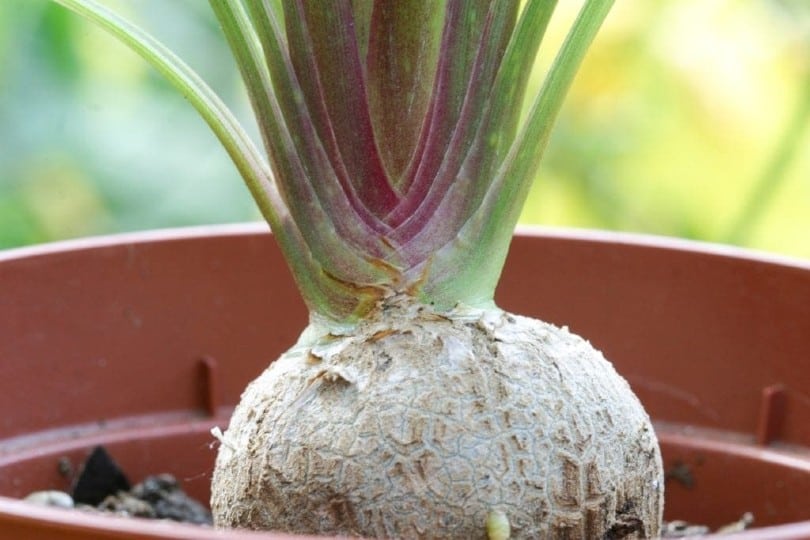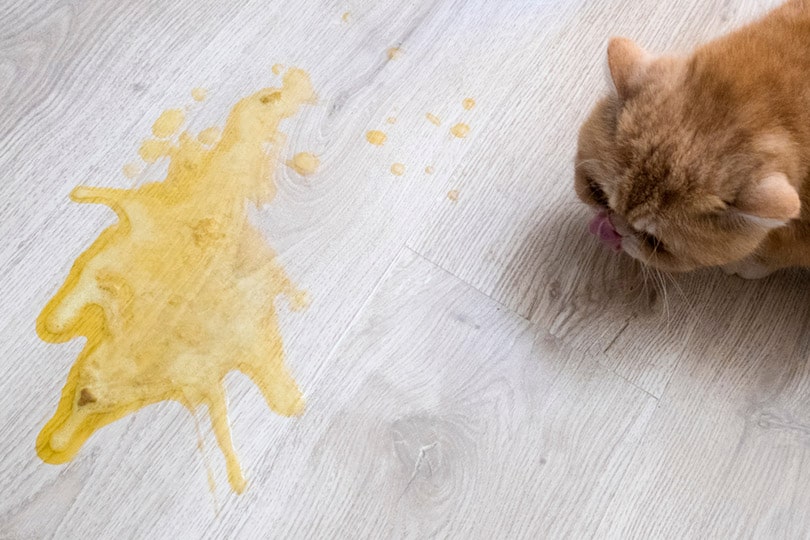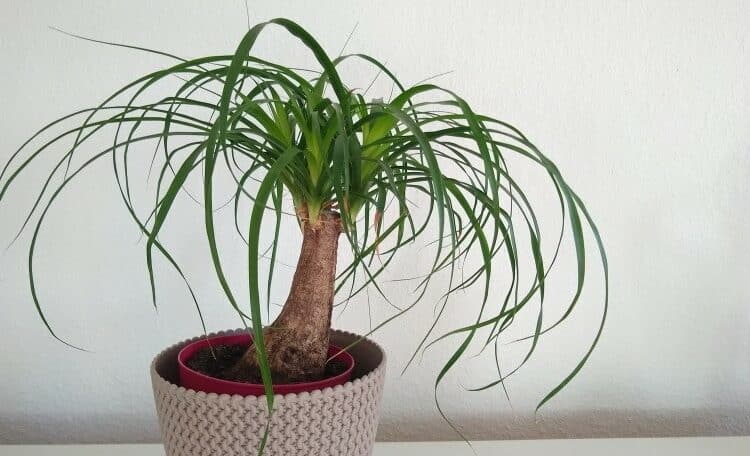It’s hard to resist beautifying your home with plants of all kinds, but people with pets must be careful when choosing plants for their home since many plants that are popular are toxic for cats. What about the ponytail palm? This plant has long, thin, yet sturdy leaves that almost beg a cat to swot at them and even nibble on them. But will your cat be harmed if they do eat one (or two) of the leaves?
Thankfully, your cat will not be harmed if they eat a bit of your ponytail palm. If you are curious to learn more about your cat and other palms you have in your house, keep reading!
Are Ponytail Palms Toxic to Cats?
Luckily, ponytail palms are non-toxic for cats, according to the ASPCA’s list of Toxic and Non-Toxic Plants1. So, you can display these beautiful plants without fear of them harming your cat!
What Do I Do If My Cat Eats My Ponytail Palm?
Since the ponytail palm is non-toxic to cats, you do not need to worry about your cat getting poisoned. No emergency care is needed. However, your ponytail palm might need some emergency care! Your cat’s teeth and claws can damage this beautiful plant, so it is a good idea to keep your plants out of reach if you have a plant-destructive feline in your home!

Are Other Palms Toxic to Cats?
Palms can be a tenuous situation with cats since many palm plants are toxic to cats. It does seem like there is at least one non-toxic palm for every toxic one, but it’s important to ensure that you don’t bring any toxic palms into your home since some of the toxic palms you can get are extremely dangerous for cats. Let’s look at some palms.
Sago Palm
Sago palms are one of the most toxic plants for cats in the world. Cats who ingest any part of a sago palm plant are susceptible to toxicity and death from the plant. Most cats who ingest the plant will experience vomiting, melena, icterus, increased thirst, hemorrhagic gastroenteritis, bruising, coagulopathy, liver damage, liver failure, and even death.
Cardboard Palm
Cardboard palms are another toxic palm that shouldn’t be kept in a home with cats. Cardboard palms contain toxic compounds such as cycasin and B-methylamino-l-alanine, which can cause cats to experience vomiting—possibly with blood, dark stools, jaundice, increased thirst, bloody diarrhea, bruising, liver failure, and death. Cardboard palms are also highly toxic to cats, and just 1–2 seeds can kill a cat.
Australian Ivy Palm
These palms are also very dangerous for cats, so homes with cats should avoid displaying Australian ivy palms. The Australian ivy palm contains terpenoids, saponins, and insoluble oxalates, which are toxic to dogs and cats alike. Cats who consume any part of this plant can expect to experience oral irritation, pain and swelling of the mouth, tongue and lips, excessive drooling, vomiting, and difficulty swallowing.

Parlor Palm
Luckily, not all palms are toxic to cats and parlor palm is one kind of palm you can display in your home without fear. There should be no inherent risk to displaying a parlor palm in your home.
Yellow Palm
Yellow palms are sometimes called golden butterfly palms, cane palms, and golden feather palms. They are non-toxic for cats and dogs. So, you can feel safe when buying one of these plants.
Fortunes Palm
Fortunes palms are also non-toxic for cats. These lovely fan-like plants will add a bit of elegance to any room without endangering the animals who live there!
Final Thoughts
Plants are one of the most beautiful things we have in our world, and it makes sense to want to adorn your house with them! Luckily, ponytail palms will not harm your cat if they do nibble on them. You can display these and many other beautiful plants without fear of hurting your cat!
Featured Image Credit: The Handyman, Shutterstock














